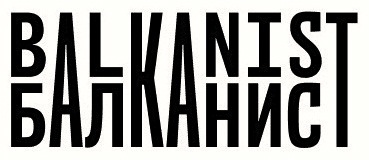As panic about “fair-skinned” children kidnapped by “criminal gangs of gypsies” spreads, the international media ignores the fact that Roma are actually the population most vulnerable to child abduction and trafficking in Europe.
She’s been called “the blond angel without an identity”. Earlier this month, the blue-eyed five- or six-year-old girl now known to the world as “Maria” was discovered living in the Farsala Roma community in the Larissa region of central Greece. Authorities found the girl to be suspiciously fair-skinned, and subjected her to a DNA test which revealed that the couple who’d been caring for her were not her biological parents. They’ve since been arrested and charged with child abduction.
As investigators search for Maria’s biological parents (her Roma caretakers claim they adopted her from a Bulgarian mother) and a full-scale moral panic about “gypsy kidnappers” erupts across Europe, there are literally hundreds if not thousands of children living in European cities who’ve been abducted or trafficked but will never make international headlines because they themselves are Roma.
The Roma community is “disproportionately affected by trafficking”, according to a study conducted by the European Roma Rights Centre (ERRC) and People in Need (PiN) in 2011. In Bulgaria, police estimate that 70 percent of all illegal adoptions are of Roma children, and more than 80 percent of all children and young adults trafficked for sexual exploitation are Roma. These are staggering numbers, considering Roma constitute just 4.9 percent of Bulgaria’s total population.
Ostalinda Maya of the ERRC explained the rationale for such research, which looked at trafficking of Roma in Bulgaria, the Czech Republic, Hungary, Romania and Slovakia. “For many years, information has circulated linking trafficking in human beings and Roma, but it doesn’t give the complete picture. Much of the discussion has focused on Roma as perpetrators while the experience of Roma as victims has been mostly ignored,” she said.
In fact, just a week before Greek police found Maria, the European Commission together with a number of partner organizations launched a 24-month project entitled “Countering new forms of Roma children trafficking” to address the high number of Roma children who’ve been abducted across Europe.
Much of the reporting on the subject has focused on “Roma organized crime groups” or the alleged complicity of adult members of the Roma community in trafficking or abducting children. However, these same reports rarely mention that trafficking of non-Romani peoples frequently involves friends or family members.
In addition, the ERRC’s research revealed that 70 percent of all individuals trafficked for sexual exploitation and forced to work along the Czech-German border are Roma. This means Western clients have increased demand for trafficked children and youth from the Roma community.
Research has shown that Romani children are also overrepresented in state care institutions, which increases their vulnerability to trafficking. Lacking any social support system, and with little knowledge as to how to live on their own, they’re frequently targeted by adults and forced into prostitution.
As one young Romani woman who was abducted and later forced into sex work at age 16 explained to ERRC researchers, “I didn’t tell anyone. I felt so bad, I cried a lot and started to miss school because I felt that everybody could see what had happened to me.
“I felt very ashamed about it,” she said.
According to the ERRC’s report, Romani orphans are at the greatest risk for trafficking for sexual exploitation between the ages of six and 15.

